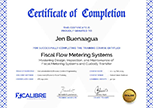| Date | Venue | Fee | |
|---|---|---|---|
| 08 Dec - 12 Dec 2025 | Oxford - UK | $ 5,950 | Register Now |
| 15 Jun - 19 Jun 2026 | Dubai – UAE | $ 5,950 | Register Now |
| 10 Aug - 14 Aug 2026 | Amsterdam - The Netherlands | $ 5,950 | Register Now |
| 19 Oct - 23 Oct 2026 | Dubai – UAE | $ 5,950 | Register Now |
About the Course
Urban Air Mobility (UAM) represents a revolutionary approach to urban transportation aimed at reducing congestion, improving connectivity, and enhancing city travel efficiency through advanced aerial vehicles. As cities worldwide grapple with the challenges of rapid urbanisation and increasing traffic, UAM emerges as a viable solution to ease transportation woes, providing a quicker, more sustainable, and often more environmentally friendly alternative to traditional ground transport.
The 5-day comprehensive Urban Air Mobility training course emphasizes the critical role of safety, efficiency, and sustainability in the development and operation of UAM systems. Delegates will learn about the latest advancements in vehicle technology, operational protocols, and infrastructure requirements essential for creating a functional UAM ecosystem. They will be well-prepared to contribute to the burgeoning field of urban air mobility, armed with the expertise to drive innovation and foster sustainable urban development. It explored the multifaceted aspects of UAM, offering delegates an in-depth understanding of the ecosystem that supports these front-line transport solutions.
Delegates will understand the technological, infrastructural, and regulatory frameworks that underpin UAM. It is designed for professionals from diverse fields, including urban planning, transportation engineering, aviation, and public policy, and it equips them with the knowledge and skills needed to implement and manage UAM systems effectively. It aims to impart technical knowledge and inspire a forward-thinking mindset necessary for the successful implementation of UAM solutions in cities worldwide.
Core Objectives
The delegates will achieve the following objectives:
- Describe the key components and stakeholders of the Urban Air Mobility (UAM) ecosystem
- Explain the operational principles and technologies behind UAM vehicles and infrastructure
- Apply safety protocols and risk management strategies in UAM operations
- Analyse regulatory frameworks and legal considerations impacting UAM implementation
- Develop strategies for integrating UAM into existing urban transportation networks
- Assess the socioeconomic and environmental impacts of UAM on urban communities
- Design plans for the development and deployment of UAM infrastructure in urban settings
Training Approach
This training course uses interactive lectures, practical simulations, and case studies to engage delegates actively in learning. Emphasis is placed on hands-on exercises that simulate real-world scenarios, allowing delegates to apply theoretical knowledge to practical challenges in UAM operations and management. Expert-led discussions and group activities foster collaborative learning, ensuring delegates gain both theoretical insights and practical skills crucial for navigating the complexities of Urban Air Mobility implementation.
The Attendees
This training course represents a diverse spectrum of professionals crucial to the successful implementation of urban air mobility (UAM). It brings expertise in urban development, transportation systems, regulatory frameworks, environmental sustainability, and technological innovations, all essential for effectively integrating and managing UAM solutions in urban environments.
It will be valuable to the professionals but not limited to the following:
- Urban Planners
- Transportation Engineers
- Aviation Specialists
- Policy Makers and Regulators
- Infrastructure Developers
- Environmental Consultants
- Technology Innovators
Daily Discussion
DAY ONE: OVERVIEW OF URBAN AIR MOBILITY
- UAM Ecosystem and Key Stakeholders
- UAM Vehicle Types and Characteristics
- Airspace Management for UAM Operations
- UAM Infrastructure Requirements
- Environmental and Sustainability Considerations
- Urban Integration and Zoning for UAM
- Economic and Financial Impacts of UAM
DAY TWO: UAM VEHICLE OPERATIONS AND SAFETY
- UAM Vehicle Design and Engineering
- Flight Operations and Control Systems
- Safety Protocols and Risk Management
- Maintenance and Reliability of UAM Vehicles
- Emergency Response and Incident Management
- Communication and Navigation Systems
DAY THREE: UAM INFRASTRUCTURE DEVELOPMENT
- Design and Construction of Vertiports
- Charging and Refueling Stations
- Integration with Existing Transportation Networks
- Public-Private Partnerships in UAM
- Regulatory Frameworks and Compliance
- Funding and Investment Strategies
- Monitoring and Managing UAM Traffic
DAY FOUR: LEGAL AND REGULATORY CONSIDERATIONS
- National and International UAM Regulations
- Certification Processes for UAM Vehicles
- Air Traffic Management Policies
- Data Privacy and Security Issues
- Liability and Insurance Concerns
- Policy Development and Stakeholder Collaboration
DAY FIVE: SOCIAL AND ECONOMIC IMPLICATIONS OF UAM
- Public Perception and Community Engagement
- Socioeconomic Benefits and Challenges
- Accessibility and Equity in UAM Services
- Marketing and Commercialisation Strategies
- Impact on Urban Development and Land Use
Certificate Awarded
Upon successful completion of this training course, participants will be awarded a Certificate of Completion from XCalibre Training Centre, acknowledging their accomplishment. This certificate serves as a testament to their dedication to developing their skills and advancing their expertise in their respective fields.


